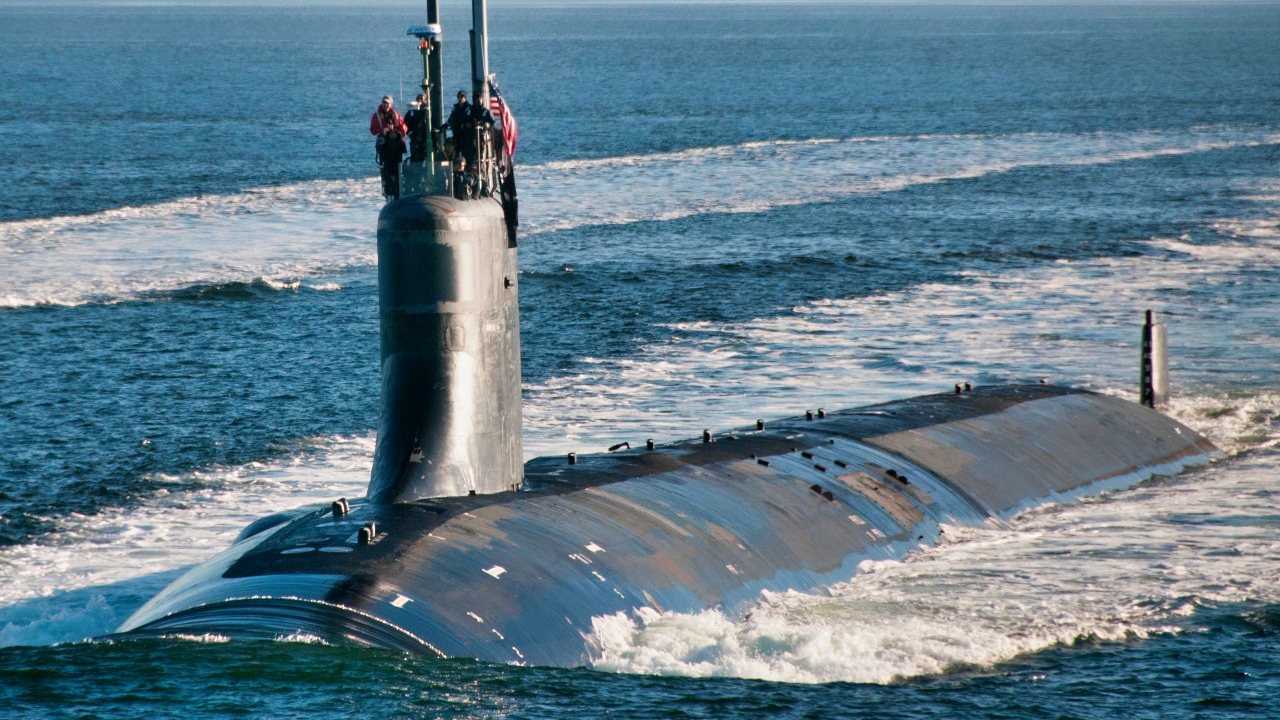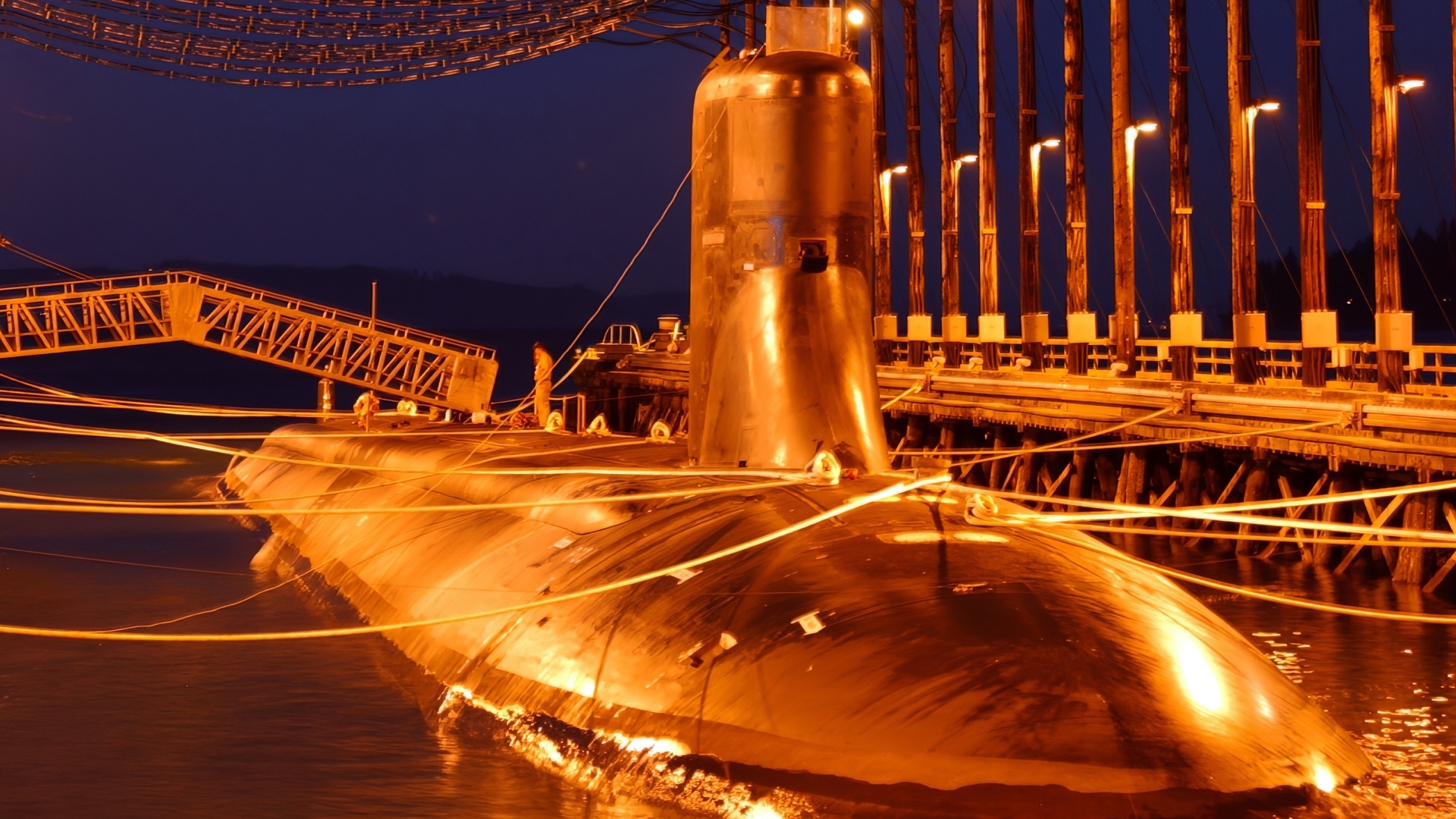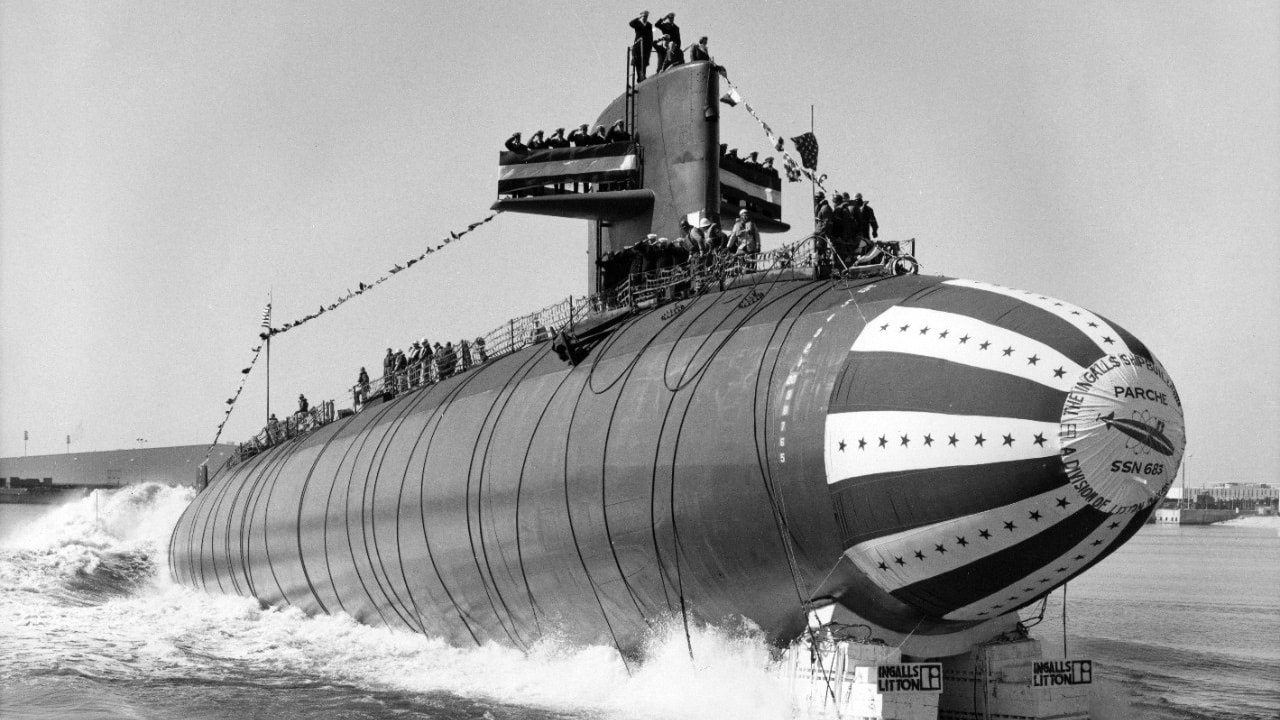Key Points and Summary – USS Parche began life as a Sturgeon-class fast attack sub, but an extensive late-’80s rebuild—adding a 100-foot section stuffed with sensors, cameras, sonar, and maneuvering thrusters—transformed her into the Navy’s signature espionage platform.
-Operating under SubDevRon 5, Parche tapped Soviet seabed cables in the Sea of Okhotsk, likely retrieved foreign missile debris, and operated under ice with reinforced structures and specialized navigation gear.

PUGET SOUND, Wash. (Sept. 11, 2017) The Seawolf-class fast-attack submarine USS Jimmy Carter (SSN 23) transits the Hood Canal as the boat returns home to Naval Base Kitsap-Bangor. Jimmy Carter is the last and most advanced of the Seawolf-class attack submarines, which are all homeported at Naval Base Kitsap. (U.S. Navy photo by Lt. Cmdr. Michael Smith/Released)

The nuclear-powered attack submarine USS Jimmy Carter (SSN 23) sits moored in the magnetic silencing facility at Naval Base Kitsap Bangor in Silverdale, Wash., on Aug. 16, 2006. The Jimmy Carter is the third and final submarine of the Sea Wolf-class.
(DoD photo by Master Chief Jerry McLain, U.S. Navy. (Released))
-She traded torpedo capacity for stealth and collection capability—and amassed an unmatched haul of unit awards before decommissioning in 2004.
-The submarine also had a self-destruct mode if it was going to be captured.
-Her legacy lives on with USS Jimmy Carter, while Parche’s sail in Bremerton honors a record written mostly in secrets.
Meet USS Parche, Spy Submarine
In 1974, the Sturgeon-class nuclear submarine USS Parche (SSN-683) was officially commissioned into the U.S. Navy.
This vessel began its service life as a regular nuclear submarine, but by the time it was decommissioned in 2004, it had become a completely different beast.
In the late 1980s, the Parche was heavily modified to accommodate valuable surveillance equipment. She served the majority of her life as a spy submarine for the U.S. Even to this day, the majority of her missions remain classified, but she was instrumental in likely laying wire taps in enemy waters.
How the Parche Becomes a Spy Submarine
The submarine was ordered on June 25, 1968, and her keel was laid down on December 10, 1970, at Ingalls Shipbuilding in Pascagoula, Mississippi. She was launched on January 13, 1973, and commissioned into service on August 17, 1974.
Named after the parche, a small coral reef butterfly fish, the vessel initially served as a standard fast-attack submarine in the Atlantic Fleet before being reassigned to the Pacific Fleet in October 1976.
After the Parche’s transfer to the Pacific fleet, the submarine took on a different role; she became a spy sub.

Sturgeon-class. Image Credit: Creative Commons.
Between 1987 and 1991, she underwent an extensive overhaul to make her more suitable for her mission.
During this period, she received several modifications at Mare Island Naval Shipyard in California.
A 100-foot extension was added to her hull, increasing her total length to 401 feet. This new section housed advanced signals intelligence equipment, sonar arrays, cameras, thrusters, and other specialized gear for clandestine operations.
The overhaul also included armored spotlights, closed-circuit television cameras, and short-range sonars for under-ice navigation.
These changes marked Parche’s shift from a combat role to a research and development platform under Submarine Development Squadron 5, with a focus on intelligence gathering, surveillance, and reconnaissance.
Her torpedo armament was reduced to just four tubes, sacrificing firepower for stealth and data collection capabilities.
Operation Ivy Bells
One of Parche’s most famous and daring missions, as told in the book Blind Man’s Bluff, was Operation Ivy Bells, a joint effort with the National Security Agency (NSA) and the CIA. This operation involved tapping into Soviet underwater communication cables in the Sea of Okhotsk, a heavily guarded region near the Soviet Pacific Fleet’s base in Kamchatka. The cables connected Soviet naval installations and carried sensitive military communications.
Parche’s crew deployed sophisticated wiretap devices on the ocean floor, allowing the U.S. to intercept and record Soviet naval communications.
These missions required extreme precision and stealth, as detection by Soviet forces could have led to international incidents or loss of life. The submarine was reportedly equipped with 150 pounds of explosives for self-destruction in case of imminent capture.
The Parche’s Other Missions
Beyond wiretapping, Parche was also tasked with retrieving missile fragments from the seabed following Soviet and Chinese missile tests.
These fragments provided invaluable insights into the design, capabilities, and technological advancements of adversarial missile systems. During the Third Taiwan Strait Crisis in 1995–1996, China launched DF-21 and DF-15 ballistic missiles into the waters around Taiwan. It is suspected that Parche was deployed to recover fragments of these missiles, although the Parche was never (officially) confirmed to have been deployed to the region.
Parche’s upgrades made her uniquely suited for under-ice operations, a capability crucial for missions in the Arctic and near Soviet territory.
Her reinforced sail and pivoting diving planes allowed her to surface through ice. The submarine’s maneuverability was enhanced with additional thrusters, and her sonar systems were optimized for navigation in complex underwater environments.
These features enabled Parche to operate in some of the most hostile and remote regions on Earth, often undetected. Her missions required not only technological superiority but also exceptional skill and discipline from her crew.
USS Parche: Retirement and legacy
The submarine’s contributions to national security were recognized with an unprecedented number of awards.
She received nine Presidential Unit Citations, ten Navy Unit Commendations, thirteen Navy Expeditionary Medals, and fifteen Battle Efficiency Awards. These honors made her the most highly decorated vessel in U.S. Navy history. Her success was a testament to the bravery and professionalism of her crew, many of whom served without ever being able to publicly discuss their missions.
Upon her decommissioning on October 19, 2004, Parche’s legacy was passed on to the USS Jimmy Carter (SSN-23), a Seawolf-class submarine modified to carry out similar “research and development duties.” USS Jimmy Carter remains active to this day, probably carrying out a wide range of missions that will never be revealed to the public.
Parche’s sail was preserved and moved to a maritime park near the Puget Sound Navy Museum in Bremerton, Washington.
It stands as a monument to the submarine’s storied career and the silent sacrifices of her crew. The sail is adorned with stripes representing her numerous unit awards and commendations, serving as a visual reminder of her unparalleled service.
About the Author: Isaac Seitz
Isaac Seitz, a Defense Columnist, graduated from Patrick Henry College’s Strategic Intelligence and National Security program. He has also studied Russian at Middlebury Language Schools and has worked as an intelligence Analyst in the private sector.
More Military
A $6,000,000,000 Nuclear U.S. Navy Aircraft Carrier ‘Sunk’ by $100,000,000 Diesel ‘AIP’ Sub
Russia’s ‘New’ Mach 4.3 MiG-41 Stealth Fighter Will Never Fly Off the Drawing Board
The Royal Navy’s Big Queen Elizabeth Aircraft Carrier Mistake Still Stings
2,960 Warplanes Built: The A-4 Skyhawk Has a Message For Any Military on Earth
Big Equipment Losses in Ukraine Mean Russian Troops Move Ammo With Donkeys










